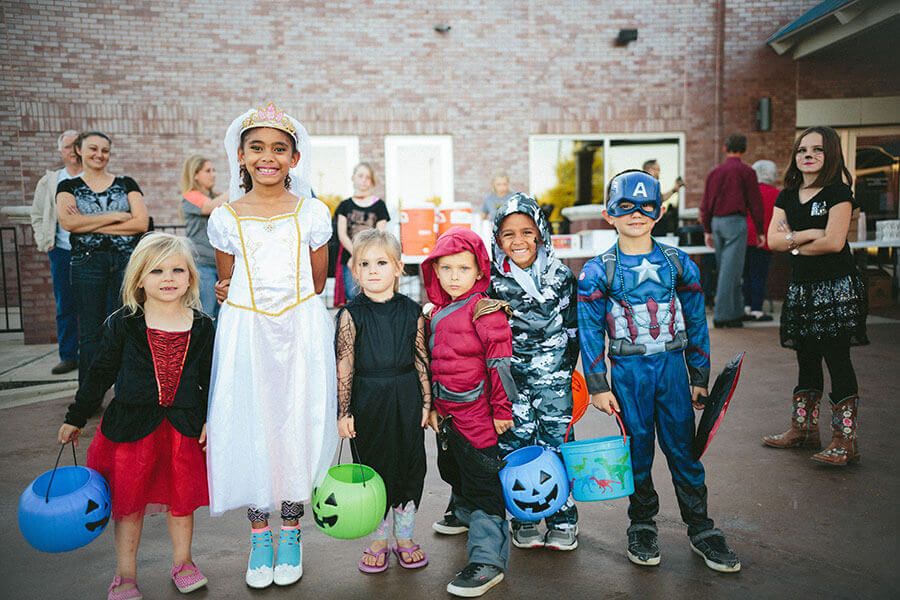Halloween is just around the corner. If your child wants to dress up as their favorite Disney character, be sure to first ask yourself what the meaning of the costume is and how it’s culturally significant?. Take time to research the costumes and the culture and teach your child about your findings. Make it an opportunity to talk with your child about the value of understanding and respecting different cultures and traditions. Communicate to your kids that respect for another person or culture always comes first. KidZ believes Halloween is a great time to talk about honoring the cultural attire of people all over the world!
Disney’s recent live-action release of Mulan ensures it will be the 2020’s IT costume. Mulan is a female warrior from China, and her clothing including the Hanfu originates primarily from the Tang Dynasty – a 300 year period commonly recognized as the Golden Age of literature and art. Mulan wears a red robe in the warrior scenes. In Chinese culture, red has always been one of its official colors and it signifies the individual’s ties to the throne or it can also identify a person with their specific tribe. Women’s dresses typically featured elongated sleeves, with an emphasis on high waists, and the outfits generally consisted of “very, very long floating garments” that reached the ground. The large flower pattern is lively and free and celebrates the richness of the culture. In terms of colors, golden yellow is the exclusive color of the emperor and the royal family. The Tang-era attire, like Mulan’s, had a tremendous impact on the life and culture of Chinese people in later dynasties, becoming a unique form of ancient Chinese culture and art.
Though Disney’s Aladdin was released almost 20 years ago, Jasmine is such a strong female character, her costume is still a favorite today. Jasmine is an Arabian princess from the Middle East, whose outfit is actually not traditional Arabian clothing but in fact resembles Indian traditional clothing. Traditional Arabian clothing includes the abaya, a long flowing outer garment worn over all other clothing and a long scarf known as a dupatta. In the movie, Jasmine’s clothes are more representative of her personality than her culture. Jasmine as well as the other costumes we see in Aladdin are more representative of the Mughal empire between the 16th and 19th centuries, which is a blend of Arab, Persian, and Indian styles. This patchwork of cultural influences is evident in the story.Jasmine’s character is based on Badroulbadour, a princess who appears in the One Thousand and One Nights. This folktale was shared by merchants from different cultures along the Silk Road, one of the world’s most important trade routes that connected China, the Far East, the Middle East and Europe
Moana and Maui are two beloved characters from Disney’s 2016 hit, Moana. Moana is a strong-willed princess and daughter of the chief of a Polynesian village. Maui a boisterous South Pacific demigod with a giant, magical fish hook. Polynesians are recognized as one of the greatest early seafaring cultures. Like Moana, they sailed thousands of miles of ocean without compasses. By living in harmony with the ocean they navigated by noting the directions of the waves, the strength and direction of the current, and the variations in bird and sea life. And – they were among the first to navigate by the stars.
Both Moana and Maui’s costumes represent South Pacific and Polynesian culture, most likely Tonga or Samoa, the two archipelagoes Polynesian People first called home..
Moana’s top or ‘tapa’, is a textile made from a mulberry tree; her skirt is made from pandanas, a palm-like tree native to the region. The sarong is called a lavalava and is worn by both men and women. Maui’s tattoos represent the local tradition of having intricate, geometrical patterns tattooed on their lower body to show their pride in their heritage and culture. Samoan men and women often roll the waistband of the lavalava to expose their tattoos during dances or or other ceremonies. The headdress, called a tuiga, is part of traditional ceremonial attire and is made from shells and feathers.
The costumes reflect items that would naturally be found on Motu Nui Island in Polynesia and include items that are still worn today for ceremonies, festive occasions and dance performances.
The movie based on Marvel Comics’ character Black Panther was a huge box office and critical hit and inspired kids (and adults!) across the country to dress up as characters from the fictional land of Wakanda. This year’s death of star actor Chadwick Boseman who brought the character life makes the costume even more meaningful to children this Halloween. The movie is based on the 1965 Black Panther comic strip and is America’s first mainstream Black superhero. T’Challa or the Black Panther, heir to the hidden but advanced kingdom of Wakanda, must step forward to lead his people into a new future and confront a challenger from his country’s past.
The costumes being worn this Halloween are based on the movie and represent a gorgeous combination of Africa and fantasy created by designer Ruth E. Jackson, the first Black woman to win an Academy Award for costume design. Black Panther’s costume represents Black power, bravery, and excellence. It reflects the indigenous people across the continent of Africa, including items like the traditional stacked neck rings worn by the Ndebele women of South Africa. T’Challa only wears black and the costume features a raised-triangle motif, reflecting the sacred geometry of Africa and being a king.


